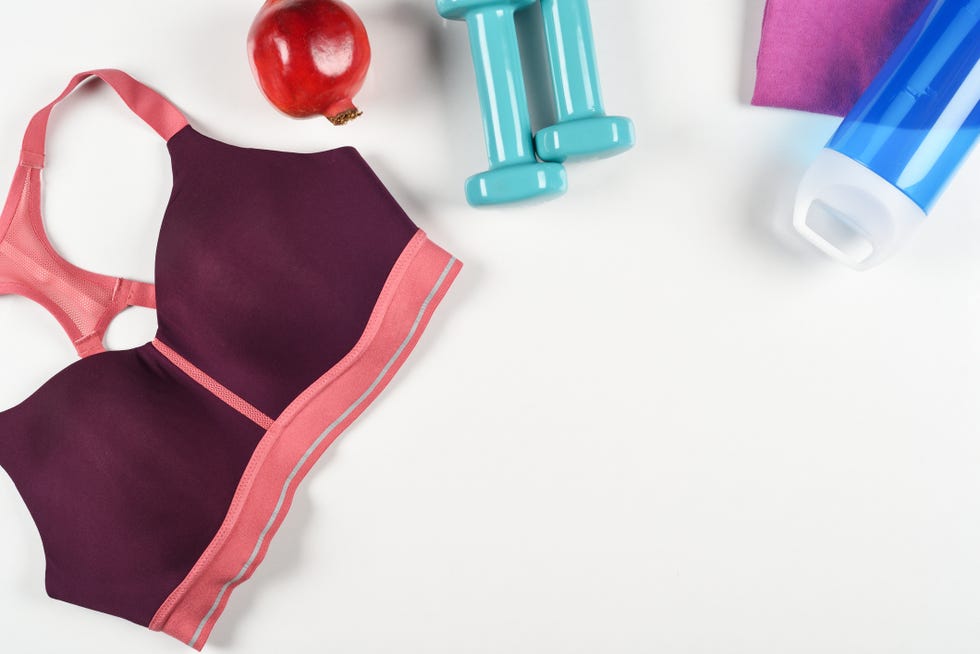They’re your undercover support team, your perfect fit, your second skin—and they literally help you defy gravity. So why aren’t you treating your bras with the TLC they deserve? Subjecting their oh-so-delicate fabrics and intricate constructions to harsh detergents and rough machine-washing will stretch, tear, and shorten the lifespan of your hardworking shapewear.
To help you preserve your treasured pieces instead, we’ve created this handy guide detailing how to clean every type of bra, from lingerie to sports styles. And our pick for a soap to wash them all that offers an effective clean while being gentle on skin? all free clear detergent—it’s hypoallergenic and 100 percent free of perfumes and dyes, ensuring that these skin-hugging pieces won’t irritate yours. (It’s the number-one detergent brand recommended by dermatologists for good reason, after all.) Read on to learn more about keeping your bras looking, feeling, and performing like new.
In General
Consult the bra’s care label first; it’s recommended to wash your bra every few (two to four) wears (or one wear, for sports bras) to avoid oil and sweat build-up from your skin. But whether you’re hand- or machine-washing, never use hot water—it will break down the fabric and make your bra lose its shape. Also avoid bleach, even the color-safe kind—it’s too harsh. Always air-dry your bras—the heat and tumbling of the dryer will cause the same undesirable issues as hot water—and lay them flat to do it, as hanging them will result in unwanted strap stretching. “One of the biggest mistakes most people make when washing their bra is not air-drying it,” says bra expert and author Jené Luciani Sena. “If you put it in a hot dryer, because of the materials the bra is made from, it literally is like kryptonite for your bra.”
Spot-treat pesky stains with a gentle stain solution (you can use a soft-bristled brush or washcloth to work it in), and then soak in cool water with some detergent and 3 percent hydrogen peroxide (safe for all colors) for 30 minutes before rinsing and drying. You can also make a paste out of baking soda and water, apply it to the stained areas, and let sit for an hour or two before hand- or machine-washing—and this method doubles as an excellent deodorizer!
Lace, Mesh, Satin & Silk Bras
Hand-washing is the way to go with these ultra-fragile fabrics—make sure you separate them by color first, since natural fabrics tend to bleed and transfer. Fill a bowl or sink with cool water and a bit of detergent that’s gentle on skin (hello, all free clear), and soak the piece for 10 to 30 minutes—any longer and you risk weakening the fabric’s fibers. Rinse with cool water and pat dry (never squeeze or twist), then air-dry. If you must machine-wash, invest in a lingerie bag to encase your bras so they don’t catch on other items (in a pinch, a pillowcase will also do!). Close the fastenings so the straps don’t tangle, insert the piece (don’t overfill—just one or two bras max, depending on the bag’s size), zip it up, and select your washing machine’s delicate cycle with cold water.
Bralettes, Sports Bras & T-Shirt Bras
If they’ve been through it, you can occasionally opt for warm water with these more actionable styles—though hand-washing with a gentle on skin but strong on funk detergent is still preferable. We love all free clear because it removes 99 percent of top everyday and seasonal allergens* while remaining a good choice for sensitive skin.
The same rules apply as with the other bra types for air-drying, though, and if you must use a washing machine, keep it on the gentle cycle and use that lingerie bag. Don’t use fabric softeners, either, as their residue can interfere with the sweat-wicking abilities of activewear materials.
Padded & Underwire Bras
Beyond adherence to all we’ve already said about hand- and machine-washing, padding and underwire require a few extra considerations. If your bra’s pads are removable, take them out and wash and dry them separately (this helps maintain their shape). Never wring the pads out—gently push down instead to release absorbed water before air-drying.
For underwires, we especially stress avoiding machine-washing altogether. The jarring motions can cause the wire to bend or rip through the fabric, or even fall out entirely and damage your machine.
*Dog and cat dander, dust mite matter, ragweed pollen, grass/tree pollen. all free clear is not intended to prevent or treat allergies.






